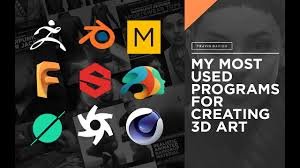Description
3D Illustration Arts
1. Depth and Realism
-
True three-dimensional modeling of objects and characters
-
Realistic shading, shadows, and reflections
-
Accurate perspective and spatial relationships
2. Lighting & Texturing
-
Use of multiple light sources (ambient, directional, spotlights)
-
Textures that mimic materials like metal, wood, fabric, and glass
-
Surface details via bump, normal, or displacement maps
3. Modeling Techniques
-
Polygonal, NURBS, and sculpting methods
-
Creation of complex shapes, organic forms, and hard surfaces
-
Use of modifiers and deformers for dynamic shapes
4. Animation & Motion
-
Ability to animate objects, characters, and cameras
-
Keyframe, rigging, and physics-based motion
-
Supports video and interactive media formats
5. Rendering Options
-
Real-time rendering for games and AR
-
High-quality ray-traced or path-traced images for stills
-
Support for multiple render engines (Cycles, V-Ray, Arnold)
6. Post-Processing & Compositing
-
Integration with tools for color grading, effects, and layers
-
Combining 3D elements with 2D graphics and photography
-
Use of depth of field, bloom, and ambient occlusion
7. Versatility & Application
-
Used in product mockups, advertising campaigns, architectural visualization
-
Ideal for creating characters and environments in games and films
-
Used in UI/UX for 3D icons, buttons, and immersive interfaces
8. Common Software Tools
-
Blender (free & open source)
-
Autodesk Maya and 3ds Max
-
Cinema 4D
-
ZBrush (sculpting)
-
Adobe Dimension and Substance Painter (texturing)





Reviews
There are no reviews yet.